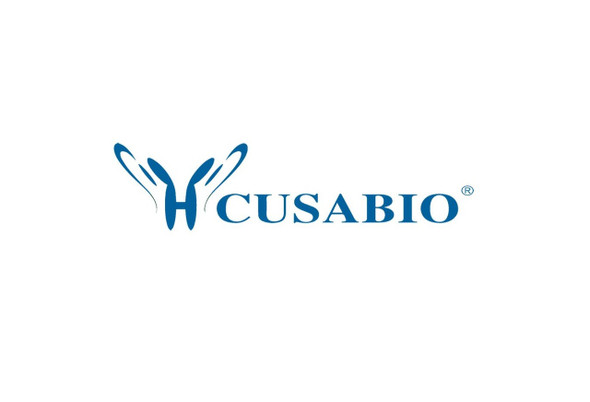Cusabio Active Proteins
Recombinant Mouse Stromal cell-derived factor 1 protein (Cxcl12) (Active) | CSB-AP001171MO
- SKU:
- CSB-AP001171MO
- Availability:
- 5 to 10 Working Days
Description
Recombinant Mouse Stromal cell-derived factor 1 protein (Cxcl12) (Active) | CSB-AP001171MO | Cusabio
Protein Description: Full Length of Mature Protein
Alternative Name (s) : SDF-1, TPAR1, C-X-C motif chemokine 12, Pre-B cell growth-stimulating factor, PBSF
Gene Names: Cxcl12,Sdf1
Research Areas: Immunology
Species: Mus musculus (Mouse)
Source: E.Coli
Tag Info: Tag-Free
Expression Region: 22-93aa
Sequence Info: KPVSLSYRCP CRFFESHIAR ANVKHLKILN TPNCALQIVA RLKNNNRQVC IDPKLKWIQE YLEKALNKRL KM
Biological Activity: Fully biologically active when compared to standard. The biological activity determined by a chemotaxis bioassay using human peripheral blood monocytes is in a concentration range of 50-100 ng/ml.
MW: 8.5 kDa
Purity: >97% as determined by SDS-PAGE and HPLC.
Endotoxin: Less than 1.0 EU/µg as determined by LAL method.
Relevance: Chemoattractant active on T-lymphocytes, monocytes, but not neutrophils. Activates the C-X-C chemokine receptor CXCR4 to induce a rapid and transient rise in the level of intracellular calcium ions and chemotaxis. Also binds to atypical chemokine receptor ACKR3, which activates the beta-arrestin pathway and acts as a scavenger receptor for SDF-1. Acts as a positive regulator of monocyte migration and a negative regulator of monocyte adhesion via the LYN kinase. Stimulates migration of monocytes and T-lymphocytes through its receptors, CXCR4 and ACKR3, and decreases monocyte adherence to surfaces coated with ICAM-1, a ligand for beta-2 integrins. SDF1A/CXCR4 signaling axis inhibits beta-2 integrin LFA-1 mediated adhesion of monocytes to ICAM-1 through LYN kinase. Plays a protective role after myocardial infarction. Induces down-regulation and internalization of ACKR3 expressed in various cells (By similarity) . Has several critical functions during embryonic development; required for B-cell lymphopoiesis, myelopoiesis in bone marrow and heart ventricular septum formation. {ECO:0000250}.; Stimulates the proliferation of bone marrow-derived b progenitor cells in the presence of IL-7 as well as growth of the stromal cell-dependent B-cell clone DW34 cells.
PubMed ID: 8342023; 7982471; 8134392; 16141072; 15489334; 8757135
Notes: Repeated freezing and thawing is not recommended. Store working aliquots at 4℃ for up to one week.
Function: Chemoattractant active on T-lymphocytes, monocytes, but not neutrophils. Activates the C-X-C chemokine receptor CXCR4 to induce a rapid and transient rise in the level of intracellular calcium ions and chemotaxis. Also binds to atypical chemokine receptor ACKR3, which activates the beta-arrestin pathway and acts as a scavenger receptor for SDF-1. Acts as a positive regulator of monocyte migration and a negative regulator of monocyte adhesion via the LYN kinase. Stimulates migration of monocytes and T-lymphocytes through its receptors, CXCR4 and ACKR3, and decreases monocyte adherence to surfaces coated with ICAM-1, a ligand for beta-2 integrins. SDF1A/CXCR4 signaling axis inhibits beta-2 integrin LFA-1 mediated adhesion of monocytes to ICAM-1 through LYN kinase. Plays a protective role after myocardial infarction. Induces down-regulation and internalization of ACKR3 expressed in various cells (By similarity) . Has several critical functions during embryonic development; required for B-cell lymphopoiesis, myelopoiesis in bone marrow and heart ventricular septum formation.
Involvement in disease:
Subcellular Location: Secreted
Protein Families: Intercrine alpha (chemokine CxC) family
Tissue Specificity: Highest expression levels detected in kidney, liver, spleen and muscle. Isoform Alpha is expressed ubiquitously but at varying levels, while isoform Beta displays tissue-specific expression, with expression detected in kidney, liver, heart, spleen and muscle but not in lung, colon, brain, skin and stomach.
Paythway:
Form: Lyophilized powder
Buffer: Lyophilized from a 0.2 µm filtered PBS, pH 7.4
Reconstitution: We recommend that this vial be briefly centrifuged prior to opening to bring the contents to the bottom. Please reconstitute protein in deionized sterile water to a concentration of 0.1-1.0 mg/mL.We recommend to add 5-50% of glycerol (final concentration) and aliquot for long-term storage at -20℃/-80℃. Our default final concentration of glycerol is 50%. Customers could use it as reference.
Uniprot ID: P40224
Uniprot Entry Name: SDF1_MOUSE
HGNC Database Link: N/A
UniGene Database Link: UniGene
KEGG Database Link: KEGG
STRING Database Link: STRING
OMIM Database Link: N/A









